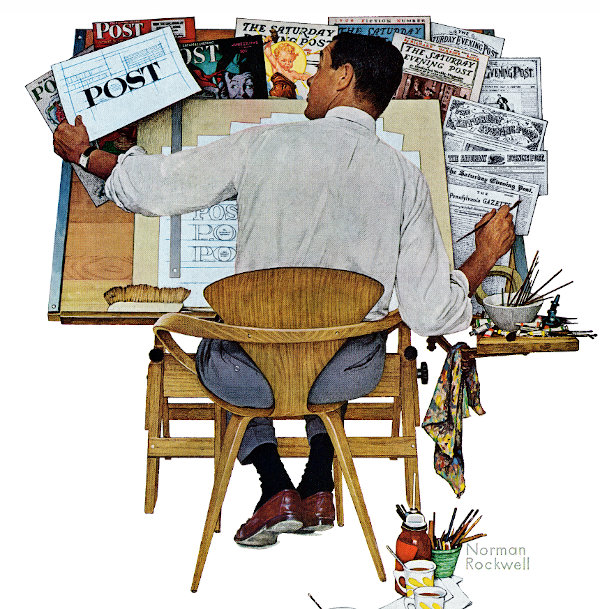1961: The Year That You Didn’t Know Changed Music
If you follow the history of music, particularly popular music, you know that certain years always recur in the conversation. 1936 marked the first of Robert Johnson’s legendary blues recordings, while 1956 marked the ascent of Elvis. You know that The Beatles did Sullivan in 1964, Woodstock happened in 1969, and that The Sugarhill Gang recorded the first hip-hop song to hit the Top 40, “Rapper’s Delight,” in 1979. Those years and many others always swirl about the conversation, but one year is consistently overlooked. In retrospect, 1961 is hugely important, as it set the stage for the rest of the decade and for decades to come. Let’s turn back the clock to the year that Berry signed the girls from the Projects, two former school friends met up again, Patsy went pop from the hospital, and four lads played the Cavern Club for the first time.
1. January: Motown Signs The Supremes
“Where Did Our Love Go” (Uploaded to YouTube by The Supremes)
They were originally called The Primettes, a girl-group companion to The Primes, which featured Paul Williams and Eddie Kendricks. The four original members of the Primettes were Betty McGlown, Florence Ballard, Mary Wilson, and Diana Ross; several of the girls lived in and around the Brewster-Douglass Housing Projects in Detroit. They sang together for two years (McGlown left, and was replaced by Barbara Martin). During this time, Ross got her former neighbor, Smokey Robinson, to get them an audition with Motown label head Berry Gordy. He didn’t sign the girls at first, thinking them too young. But the group persisted, showing up at the label HQ and eventually getting to do handclaps and more on records. By January of 1961, Gordy agreed to sign them, with a catch. The Primes were no more, with Williams and Kendricks joining The Temptations, so Gordy felt they needed a new name. Ballard picked one from a list. Forever after, they’d be The Supremes.
2. January 30: The Shirelles Go #1
The Shirelles hold the distinction of being the first Black all-girl group to hit #1 on the Hot 100. The song was “Will You Love Me Tomorrow.” Obviously, the #1 was incredibly important for the glass ceiling that it shattered and the opening that it created for groups to follow (like the newly signed Supremes). The song was a big hit internationally, making the Top 5 in countries like the U.K. and New Zealand. “Will You Love Me Tomorrow” was also the first #1 for its writers, the then-married couple of Gerry Coffin and Carole King. The pair would write 30 hit songs together throughout the 1960s.
3. February: Motown Sells a Million
Berry Gordy positioned his Motown label as “the sound of young America.” He put together a studio system with top-notch writers and musicians, and signed talent local to Detroit that he could elevate into stars. One of those early stars (and songwriters) was Smokey Robinson of the group The Miracles. In 1960, Gordy and Robinson co-wrote “Shop Around,” a song for The Miracles that would take the label into previously uncharted territory. It went to #2 on the Hot 100 singles, #1 on the R&B chart, and, by February of 1961, became the first Motown single to sell a million copies. “Shop Around” was a statement of legitimacy for Gordy’s system and growing stable of artists, paving the way for Motown to earn the nickname “Hitsville, U.S.A.”
4. February: The Beatles Play The Cavern Club

It wasn’t the first time for everybody. John Lennon had played the club with The Quarrymen in 1957; Paul McCartney played with them in 1958. Future bandmate Ringo Starr had played with Rory Storm and the Hurricanes in 1960. But the first time that The Beatles (and George Harrison) played there was February 9, 1961. At that point, the line-up was Lennon, McCartney, Harrison, Stuart Sutcliffe, and Pete Best. The Beatles had just returned from their long residency in Hamburg, Germany, and their constantly evolving showmanship combined with their youthful energy convinced everyone that something about that band was special. Sutcliffe would leave that summer, and Best would be replaced by Ringo Starr in 1962. Between their first date and August of 1963, The Beatles played The Cavern Club 292 times, building the tight unit that would take the world by storm.
5. February: Reprise Begins Releasing
Frank Sinatra remains one of the biggest names in the history of music. In 1960, he did something that only an artist of his clout could do: he formed his own label. Reprise Records would be a place where Sinatra could exercise his artistic freedom more thoroughly, while also creating a home base from which his friends, like Sammy Davis, Jr., and specially selected acts could release records. Both Sinatra and Davis began releasing singles and albums on the label in 1961; others quickly joined the line-up, including Dean Martin, Bing Crosby, Duke Ellington, and Rosemary Clooney. The set-up is what earned Sinatra the nickname “The Chairman of The Board.” One young artist signed to Reprise in 1961 would go on to make a big splash during the rest of the decade; that was Sinatra’s daughter, Nancy. Signed at age 20, she would blow up mid-decade as a music and style icon with classic hits like 1965’s “These Boots Are Made for Walkin’.”
6. July: Billboard Separates the Charts
In 1961, there were still radio stations that wanted to avoid any association with the label “rock and roll.” Billboard magazine, which was the compilation source for the most widely read and acknowledged charts tracking popular music, tried to accommodate stations by creating a separate chart that would leave out up-tempo hits from the rock genre. The so-called “Easy Listening” chart debuted in July of 1961. While some rock or R&B artists would cross over with ballads, the general sound and feel of the chart was essentially a generational split. Younger listeners would come to consider “Easy Listening” to be “old people’s music.” That fracture between younger and older audiences would become one of the cultural engines of the entire decade. The chart has changed names many times over the years, adopting monikers like “Middle-Road Singles” and “Pop-Standard Singles” before settling on “Adult Contemporary” in 1983.
7. August: Patsy Cline Crosses Over from Her Hospital Bed
“I Fall to Pieces” (Uploaded to YouTube by Patsy Cline)
In June of 1961, country star Patsy Cline nearly died when the car she was traveling in with her brother was hit head-on by another driver. With a dislocated hip, a broken wrist, and more injuries, Cline underwent emergency surgery. Her initial prognosis was bleak, but Cline survived and spent a month in the hospital recovering. While she was in bed, the single that she’d released in April, “I Fall to Pieces,” surged on the Country and Western chart. By August, it had hit #1 Country and crossed over to the Pop charts, where it would peak at #12. Before the end of the month, she would record a new song by a struggling songwriter for release in October (you’ll see).
8. October: West Side Story Takes Over
West Side Story was a huge hit film in 1961, but the soundtrack was impossibly big. Released in October, the album would sit at #1 for a ridiculous 54 weeks (yes, more than a year). Remarkably, it would remain the best-selling album of the ENTIRE DECADE . The only other album to have a similar run at #1 is Michael Jackson’s Thriller, which spent 37 (non-consecutive) weeks on top. The Broadway show (which launched in the ’50s) and the subsequent film were inextricable from 1960s culture, and remain a crucial piece in the legacies of Leonard Bernstein, Stephen Sondheim, and Jerome Robbins.
9. October 16: “Crazy” Is Released
“Crazy” (Uploaded to YouTube by Patsy Cline)
Patsy Cline’s follow-up to “I Fall to Pieces” hit stores on October 16. The song was “Crazy.” It went #2 Country, #9 on the Hot 100, and #2 on Easy Listening. It established Cline as a firmly entrenched crossover star. Though she would die in a plane crash in 1963, Cline left a legacy as a top-flight vocalist; she had also mentored her friend, Loretta Lynn, who would become a dominant force in Country throughout the decade.
The other side-effect of “Crazy” is that it solidified the career of its songwriter, Willie Nelson. The song became the biggest juke-box hit of all time, and established Nelson as an in-demand writer. He signed with Liberty Records in 1961 and started releasing his own hit singles the following year.
10. October 17: Mick and Keith Meet Again

Mick Jagger and Keith Richards met at age seven in 1950 when they were both schoolchildren in Dartford, England. They went to school together until the Jagger family moved in 1954. Coincidence (or maybe fate; okay, definitely fate) put them both on the same platform at the Dartford railway station. The two old friends started talking; Jagger had records by Muddy Waters and Chuck Berry with him, which excited fellow blues fan Richards. That meeting led directly to the pair forming their first group together, the Blues Boys. By the next year, they would be in a new group with Brian JonesDick Taylor, Ian Stewart, and, eventually, Charlie Watts; that group would come to be called The Rolling Stones.
11. November 20 & 22: Bob Dylan Records His Debut Album
Bob Dylan had been gigging in New York when he was signed to Columbia Records by John H. Hammond. Hammond produced Dylan’s self-titled debut, which would see release the following March. The album includes two original songs; the remainder of the album is a set of covers largely drawn from folk tradition. Bob Dylan didn’t make great waves upon its release, but the hit of what would come is there. His next album, The Freewheelin’ Bob Dylan, would open with “Blowin’ in the Wind.”
12. November 27: The Beach Boys Debut with “Surfin’”
“Surfin’” (Uploaded to YouTube by Beach Boys)
If your parents went out of town and left you food money, but you blew it all on musical instruments, you’d probably be grounded for eternity. Then there’s the Wilson brothers (Brian, Carl, Dennis), their cousin (Mike Love), and their friend (Al Jardine). When the Wilson boys’ parents took some friends to Mexico City for a few days over Labor Day weekend, the boys used the money to rent instruments and equipment to work out a song that Brian and Mike wrote. Dubbed “Surfin’,” the upbeat tune had its first performance for the shocked Wilson parents when they returned home. The Wilsons’ father, Murry, himself a musician and songwriter, said he’d manage the group. They ended up recording the song for the Candix label, using the name The Pendletones, in October. When they got the pressed singles back, the label’s PR man had changed their name. The Wilsons, Love, and Jardine had become The Beach Boys. “Surfin’” hit #75 on the Hot 100, but the following year, they took “Surfin’ Safari” to #14, the first of their 36 Top 40 singles.
ENCORE: Births
1961 wasn’t just important for what happened; it was important for who happened. A shocking number of musicians born in 1961 would have a major impact on the shape of various forms of American popular music. Those people include: Suggs and Mark Bedford (Madness); Gillian Gilbert (New Order); Margo Timmins (Cowboy Junkies); Vince Neil (Mötley Crüe); Henry Rollins (Black Flag; Rollins Band); Dez Cadena (Black Flag); Andy Taylor (Duran Duran); Slim Jim Phantom and Lee Rocker (The Stray Cats); Roland Gift (Fine Young Cannibals); Enya; Nick Heyward (Haircut 100); Melissa Etheridge; El DeBarge; Tom Araya (Slayer); Kim Deal (The Pixies; The Breeders); Kelley Deal (The Breeders); Boy George and Roy Hay (Culture Club); Alison Moyet; Jimmy Somerville (Bronski Beat); Dennis Danell (Social Distortion); Curt Smith and Roland Orzabal (Tears for Fears); Terri Nunn (Berlin); Toby Keith; Andrew Fletcher and Martin Gore (Depeche Mode); Guru (Gang Starr); Keith Sweat; Gary Cherone (Extreme; Van Halen); Rikki Rockett (Poison); Dave “The Edge” Evans and Larry Mullen Jr. (U2); Jon Farriss (INXS); Dean DeLeo (Stone Temple Pilots); Scott Travis (Judas Priest); Dave Mustaine (Metallica; Megadeth); Bilinda Butcher (My Bloody Valentine); Wynton Marsalis; Randy Jackson (The Jacksons); k.d. lang; Leif Garrett; Jim Brickman; Jim Reid (The Jesus & Mary Chain); Sara Dallin and Keren Woodward (Bananarama); Jill Sobule; Lloyd Cole; Doug Hopkins (Gin Blossoms); Billy Duffy (The Cult); Melle Mel (Grandmaster Flash & The Furious Five); Maxi Priest; Kip Winger (Winger); Jim Martin (Faith No More); Debbi Peterson (The Bangles); Billy Ray Cyrus; and Darryl Jones (The Rolling Stones).
Featured image: Katherine Welles /Shutterstock
Rockwell Files: Freshening Up Our Logo
To reflect its new, modern style in 1961, the Post underwent a major redesign. The magazine changed its editor, layout, typography, and, especially, its logo. Norman Rockwell celebrated the change on the September 16 cover by painting Herbert Lubalin, who created the new Post logo, at his drafting table. The cover was a humorous allusion to a cover Rockwell had painted in 1938 in which the artist portrayed himself surrounded by discarded sketches, staring at a blank canvas and scratching his head in search of a fresh idea.

To emphasize the Post’s long history on this cover, he tucked copies of 11 previous Post cover illustrations around the work table. He even included a copy of the Pennsylvania Gazette, founded by Benjamin Franklin in 1728, from which the Post was born.
A cover recalling the Post’s long history is appropriate, we feel, as we approach 2021 — a very special year for the magazine. On August 4, 2021, we will be 200 years old. We think Norman would be proud. We certainly are.
This article is featured in the November/December 2020 issue of The Saturday Evening Post. Subscribe to the magazine for more art, inspiring stories, fiction, humor, and features from our archives.
Featured image: Norman Rockwell / © SEPS